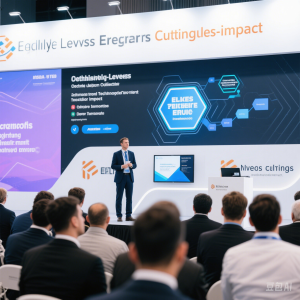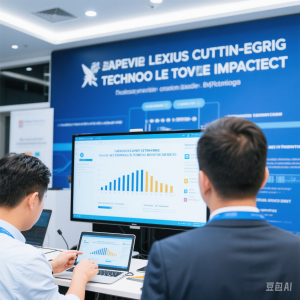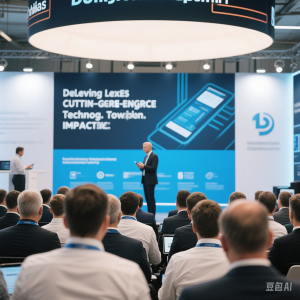Exploring the Frontiers of Cutting – Edge Technologies

In the ever – evolving world of technology, staying abreast of cutting – edge advancements is essential for developers and tech enthusiasts. This article delves into some of the most exciting and transformative technologies that are currently pushing the boundaries of what’s possible.
Edge AI: Transforming Computing at the Periphery
- Real – Time Data Processing in IoT Devices
Edge AI brings artificial intelligence capabilities directly to the edge devices, such as sensors and IoT gadgets. In a smart home setup, for example, edge – based AI algorithms can analyze data from motion sensors, temperature sensors, and security cameras in real – time. Instead of sending all the data to a central cloud server for processing, the edge device can make immediate decisions. If a motion sensor detects unusual movement at night, the edge AI can trigger an alarm system without waiting for a round – trip communication with the cloud. This reduces latency significantly and ensures a more responsive and secure home environment. In industrial IoT, edge AI can be used to monitor equipment health. Sensors attached to machinery can analyze vibration, temperature, and other parameters on – the – spot. If any signs of impending failure are detected, maintenance can be scheduled proactively, minimizing downtime.
- Privacy – Preserving Computation
One of the major advantages of Edge AI is privacy – preserving computation. Since data is processed locally on the edge device, there’s no need to transmit sensitive information to the cloud. In healthcare, for instance, wearable devices can use edge AI to analyze a patient’s vital signs such as heart rate, blood pressure, and sleep patterns. The device can detect any anomalies and send only the relevant summary data to the healthcare provider, protecting the patient’s detailed health data from potential breaches during cloud – based transmission. This is particularly crucial in industries where data privacy is of utmost importance, like finance and government sectors.
Web3: Redefining the Internet Landscape
- Decentralized Applications (dApps) and Their Impact
Web3 is centered around decentralized applications (dApps) that run on blockchain technology. These dApps eliminate the need for intermediaries in various online services. For example, in the financial sector, decentralized finance (DeFi) dApps are revolutionizing traditional banking services. A user can lend or borrow funds directly from other users through a DeFi platform without going through a bank. Smart contracts, which are self – executing contracts with the terms of the agreement directly written into code, ensure the security and transparency of these transactions. In the content creation industry, dApps are also emerging. Artists can sell their digital art directly to consumers on blockchain – based platforms, getting rid of middlemen like art galleries or online marketplaces. This gives artists more control over their work and a larger share of the profits.
- The Future of Identity and Ownership in Web3
Web3 also brings new concepts of identity and ownership. In the traditional web, users often rely on third – party platforms to manage their identities. In Web3, users can have self – sovereign identities. They can control their personal information and choose which parts to share with different services. For example, a user can use a decentralized identity wallet to prove their age for accessing age – restricted content without revealing their full date of birth. Regarding ownership, non – fungible tokens (NFTs) are a significant aspect of Web3. NFTs represent unique digital assets, such as digital art, collectibles, or in – game items. Owning an NFT gives the user true ownership rights over the digital asset, which can be bought, sold, or traded on blockchain marketplaces.
Neuromorphic Computing: Imitating the Human Brain
- How Neuromorphic Chips Work
Neuromorphic computing aims to build computer systems that mimic the structure and function of the human brain. Neuromorphic chips are designed with artificial neurons and synapses. These neurons can process information in a parallel and distributed manner, similar to the human brain. For example, a neuromorphic chip may have thousands of artificial neurons that can communicate with each other through synapses. When a neuron receives a certain amount of input signals, it can “fire” and send an output signal to other connected neurons. This parallel processing ability allows neuromorphic systems to perform complex tasks, such as pattern recognition, much faster and more efficiently than traditional computing systems. In image recognition tasks, a neuromorphic system can quickly identify objects in an image by processing different parts of the image simultaneously, just like how the human visual cortex works.
- Potential Applications in Robotics and AI
The applications of neuromorphic computing are vast, especially in robotics and AI. In robotics, neuromorphic chips can enable robots to adapt to their environment more effectively. For example, a robot equipped with a neuromorphic system can quickly respond to changes in its surroundings. If it detects an obstacle in its path, the neuromorphic system can process this information in real – time and adjust the robot’s movement accordingly. In the field of AI, neuromorphic computing can enhance machine learning algorithms. It can provide a more natural way for machines to learn and understand complex patterns, potentially leading to more intelligent and human – like AI systems.
Sustainable Tech: Green Innovations in the Digital Realm
- Energy – Efficient Data Centers
Sustainable technology in the digital realm is becoming increasingly important. One area of focus is energy – efficient data centers. Data centers consume a vast amount of energy to power servers and cooling systems. To address this, companies are adopting various green technologies. For example, some data centers are using liquid cooling systems instead of traditional air – cooling. Liquid cooling is more efficient as it can transfer heat more effectively, reducing the energy required for cooling. Additionally, many data centers are switching to renewable energy sources. They are installing solar panels on their rooftops or purchasing wind – generated electricity. This not only reduces their carbon footprint but also makes them more cost – effective in the long run.
- Sustainable Software Development Practices
Sustainable software development is another aspect of green tech. Developers are now considering the environmental impact of their code. For example, writing optimized code that requires less computational resources can save energy. Instead of using complex algorithms that consume a lot of processing power, developers can choose more lightweight and efficient algorithms. In mobile app development, optimizing the app’s battery usage is crucial. By reducing unnecessary background processes and optimizing data transfer, apps can consume less power, extending the battery life of mobile devices.
Digital Twins: Virtual Reflections for Real – World Optimization
- Industrial Applications of Digital Twins
Digital twins are virtual replicas of real – world objects or systems. In the industrial sector, digital twins are being used for various purposes. For example, in manufacturing plants, a digital twin of a production line can be created. This digital twin can simulate the actual production process, taking into account factors such as machine performance, material flow, and human – machine interaction. By analyzing the digital twin, manufacturers can identify bottlenecks in the production line and make improvements in the real – world setup. They can test new production strategies or changes to the layout of the factory without disrupting actual production. In the aerospace industry, digital twins of aircraft engines can be used to monitor engine health. The digital twin can simulate the engine’s performance under different conditions and predict when maintenance is required, ensuring the safety and efficiency of the aircraft.
- Digital Twins in Smart Cities
In smart cities, digital twins are playing a significant role. A digital twin of a city can integrate data from various sources, such as traffic sensors, environmental monitors, and energy grids. This integrated data can be used to optimize city operations. For example, by analyzing the digital twin, city planners can manage traffic flow more efficiently. They can identify areas with high traffic congestion and implement measures like dynamic traffic signal timings or suggest alternative routes to drivers. In terms of energy management, the digital twin can help identify areas where energy consumption can be reduced. It can simulate the impact of different energy – saving measures, such as promoting the use of public transportation or improving building insulation, and guide the city in making more sustainable decisions.
In conclusion, these cutting – edge technologies are not only fascinating but also have the potential to revolutionize various industries. Developers and businesses need to keep a close eye on these trends and explore how they can leverage these technologies to drive innovation and growth.




